I. Glass
The glass exhibits a refractive index of 1.52, constant across the entire surface to four decimal places—an impossibility. Aldrich sets down his spectroscope and cleans the prism, certain of error. The autumn light through his workshop's north windows admits no ambiguity. He tests again.
1.52. Constant. Impossible.
Crown glass, by composition—silica, sodium, calcium—but uniform to a degree that defies manufacture. He examines the edges under magnification: no tool marks, no annealing stress, no variations in the melt. As if the substance had never been worked at all. As if it had simply been.
He catalogs the observations in his notebook, India ink precise on cream paper. Forty years of metallurgical discipline have taught him this: anomaly precedes discovery. The Fraunhofer lines that baffled him as a student in Heidelberg had eventually revealed the sun's composition. This glass, too, will yield its secrets to systematic inquiry.
The device—black, smooth, impossibly thin—lies on his iron workbench like an augury. It had appeared in his workshop three weeks prior without explanation. He had not questioned the mechanism of its arrival. That was metaphysics. This was material.
The surface shows no joins, no bezel, no evidence of assembly. The glass and the black housing form a seamless whole. He presses the shallow indentation on the device's edge and light blooms—impossible light, uniform and cold—illuminating symbols he does not recognize.
He begins to suspect the glass is not the mystery. The glass is merely the door.
Further analysis required. Germany, perhaps. Or Sheffield.
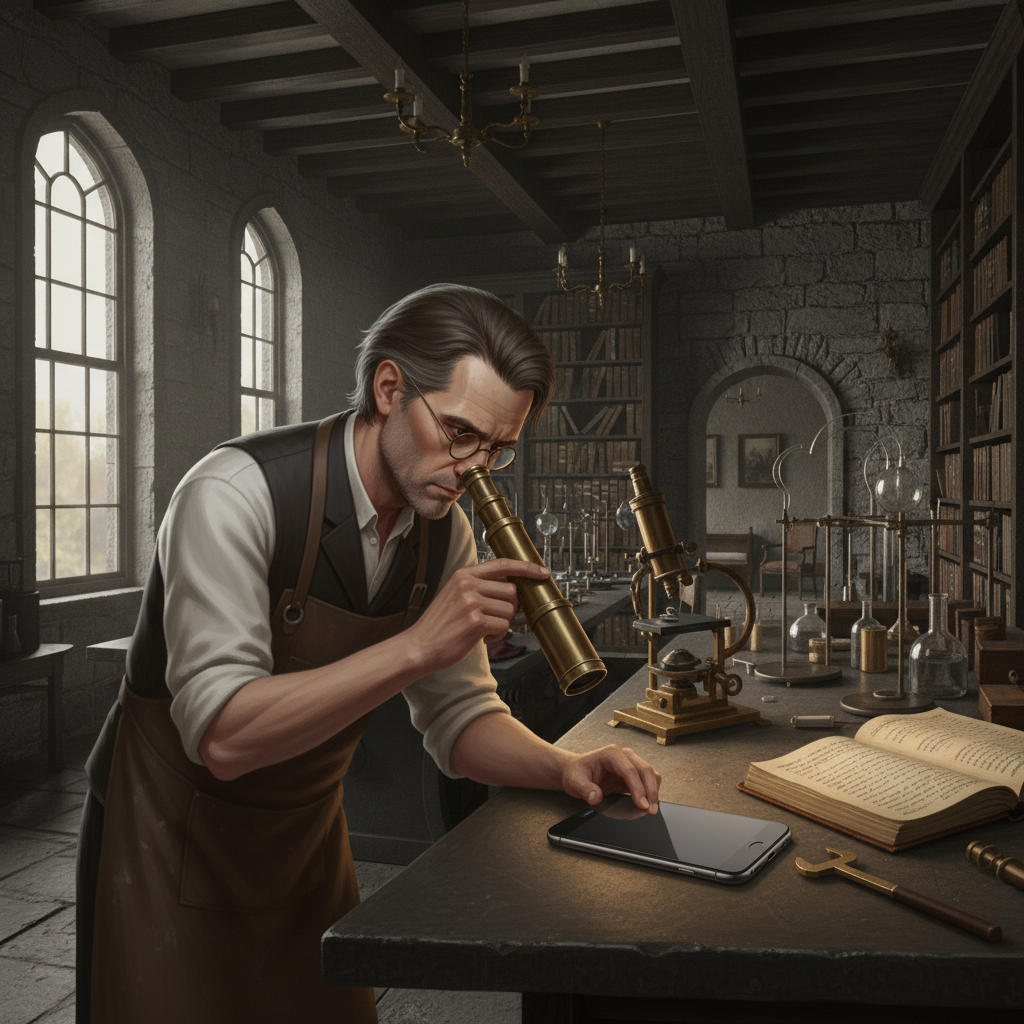
II. Metal
The housing: aluminum, spectroscopy confirms, but wrong.
Aluminum is silver-white, soft, obtained through electrolytic reduction at tremendous expense. Napoleon plates his cutlery with it; the Washington Monument will be capped with it. Rare metal, prestige metal, difficult metal.
This aluminum is gray. Hard. Machined to tolerances his calipers barely register.
Aldrich performs the analysis three times, recalibrates his instruments, performs it twice more. The elemental signature does not lie. Aluminum, purity approaching 99.97%, alloyed with trace elements he can identify but not explain. Copper. Magnesium. In proportions suggesting intention.
The hardness is wrong. He scores it with a steel file: it resists. Aluminum should yield. This does not yield.
He disassembles the device with watchmaker's tools, documenting each step. The internal chassis reveals screws—dozens of them—each smaller than a match-head, threaded with precision beyond any lathe in Philadelphia. Beyond any lathe he has seen in Europe. The tolerances are not human.
He measures the pitch: 0.4 millimeters. Consistent. Perfect.
His hands shake as he records the observation. Not from age—he is forty-seven, steady—but from the first whisper of unease. He has worked with the finest machinists, the German instrument-makers whose precision borders on art. This exceeds art. This exceeds capability.
October 31, 1870. I do not understand how this was made.
The admission costs him. Understanding is his faith. Empiricism is his cathedral. To document "I do not understand" is to genuflect before mystery.
But the metal does not care for his faith. The metal simply is.
He attempts replication. Takes aluminum stock, anneals it, attempts the alloy ratios. His furnace cannot achieve the purity. His tools cannot achieve the tolerance. After sixteen hours of effort, he produces something that resembles the original the way a child's sketch resembles a cathedral.
The device sits on his bench, indifferent. Perfect. Mocking.
He has not eaten today. Or yesterday. He does not remember.
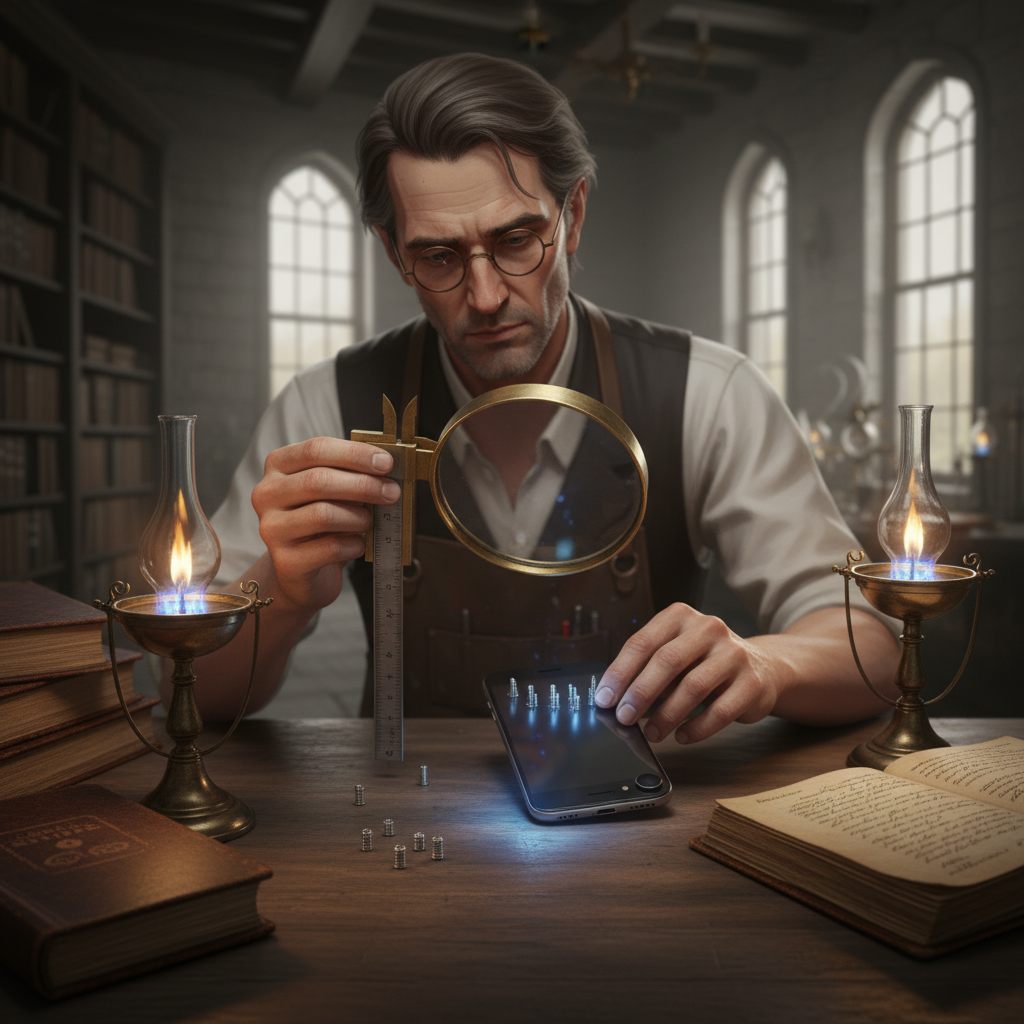
III. Circuit
Green.
The board is green, which is the first wrongness. No material he catalogs explains the color. Resin of some kind, hardened, smooth as glass. Embedded within: pathways.
Under the microscope, magnification pushed to its limit, the pathways resolve into intention. Copper traces—he thinks they are copper—winding in geometries too precise for hand or tool. Widths measuring thousandths of a millimeter. Parallel runs that do not vary.
He follows one trace to a junction. It meets seventeen others. They do not touch yet somehow connect, mediated by a substance that conducts when it should not, insulates when it should not, obeys rules he does not possess.
At the center: silicon.
He knows silicon—metalloid, crystalline, semiconductive in certain temperatures. He has read Berzelius. He understands its place in the elemental order. But this silicon is not raw. It has been worked.
The crystal structure, visible under polarized light, shows intentional impurities. Elements introduced not as contamination but as design. Phosphorus. Boron. In concentrations suggesting—
He stops. Breathes. Returns to observation.
The silicon conducts. Partially. Controllably. He theorizes charge carriers moving through the lattice, facilitated by the impurities, creating pathways for current that can be switched, modulated, controlled at scales invisible to his instruments.
He is theorizing quantum behavior. He does not have quantum theory.
November 19. I understand the principle. I cannot build the thing.
The gap opens beneath him, vertiginous.
He can see what it does. Can hypothesize the mechanism. Can document the architecture. But the tools do not exist. The processes do not exist. The industrial infrastructure to purify silicon to this grade, to dope it with this precision, to etch pathways measured in microns—none of it exists.
He attempts one trace. One single pathway, one centimeter long, width of 0.5 millimeters.
His steadiest hand, his finest wire, his most controlled heat. The result: a smear of copper, oxidized, irregular, useless.
The device required thousands of these traces. Millions? He loses count.
Is this understanding, then?
The question appears in his notebook, unbidden. His handwriting, but not his syntax. He stares at it. Does not cross it out.
Understanding should lead to capability. That is the covenant. Study the world, learn its rules, bend it to will. Enlightenment. Progress.
But he understands this device and cannot build it. Understands and is powerless. The understanding sits in his mind, pristine and useless, a cathedral in a desert.
He has not slept in two days. Or three. The north light is constant. Time is negotiable.
His wife's portrait faces the wall. He turned it three weeks ago. Could not bear her eyes watching this.
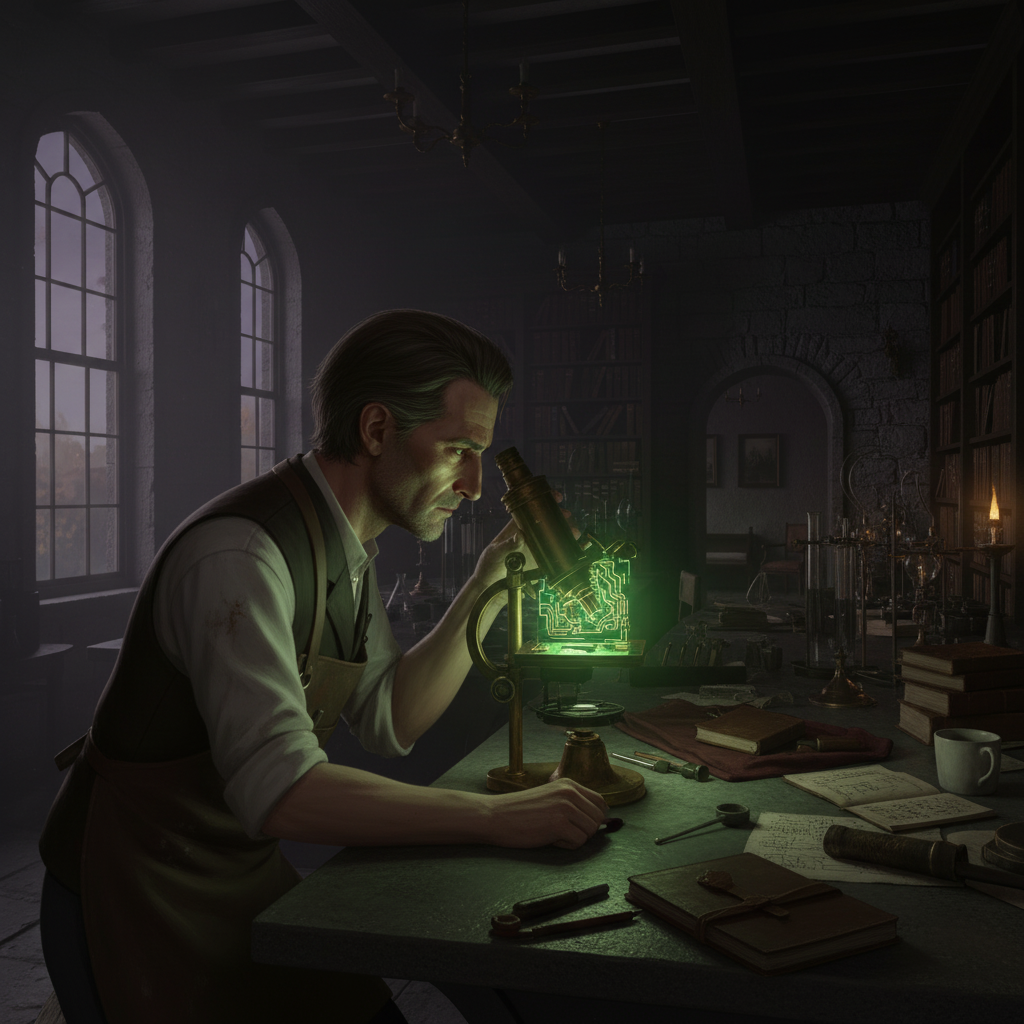
IV. Battery
Lithium.
The cell, disassembled with trembling hands, reveals lithium cobalt oxide and graphite in layers thinner than paper. A chemistry that should not be stable, yielding energy density that violates every calculation he trusts.
He measures the voltage: 3.82 volts. From a package smaller than his thumb.
The energy contained—if his mathematics hold, if his sanity holds—exceeds any galvanic cell by orders of magnitude. The electrochemistry makes no sense. The cathode reactions require conditions he cannot create. The separator membrane is polymer he cannot identify, porous at the molecular level, conducting ions while blocking electrons.
He understands it.
All of it.
The principles are clear. Lithium ionization. Intercalation into graphite. Reversible reduction-oxidation. He sketches the reactions, balances the equations, derives the potential.
The understanding is perfect.
The futility is perfect.
He powers the device on one final time. The glass illuminates. Symbols. Images. A strange clock counting down: 3%.
The battery is dying.
When it dies, the proof dies.
But no. The device functioning proves nothing. He cannot demonstrate his analysis. Cannot replicate his findings. Cannot explain semiconductor physics to men who do not know the electron exists.
I am the only person in the world who understands this.
I am the only person in the world who cannot prove it.
Three choices:
Destroy the device. Burn the notebooks. Preserve sanity. Return to the world of achievable metals, explicable glass, human tolerances. Forget.
Continue. Attempt replication until death. Fill the workshop with failed approximations, a museum of hubris. Embrace the obsession. Let it consume.
Or—
Document.
Document everything. Perfect notation. Every principle discovered, every analysis performed, every impossible truth witnessed.
Seal it.
Send it forward.
Let the future judge whether this was knowledge or fever dream.
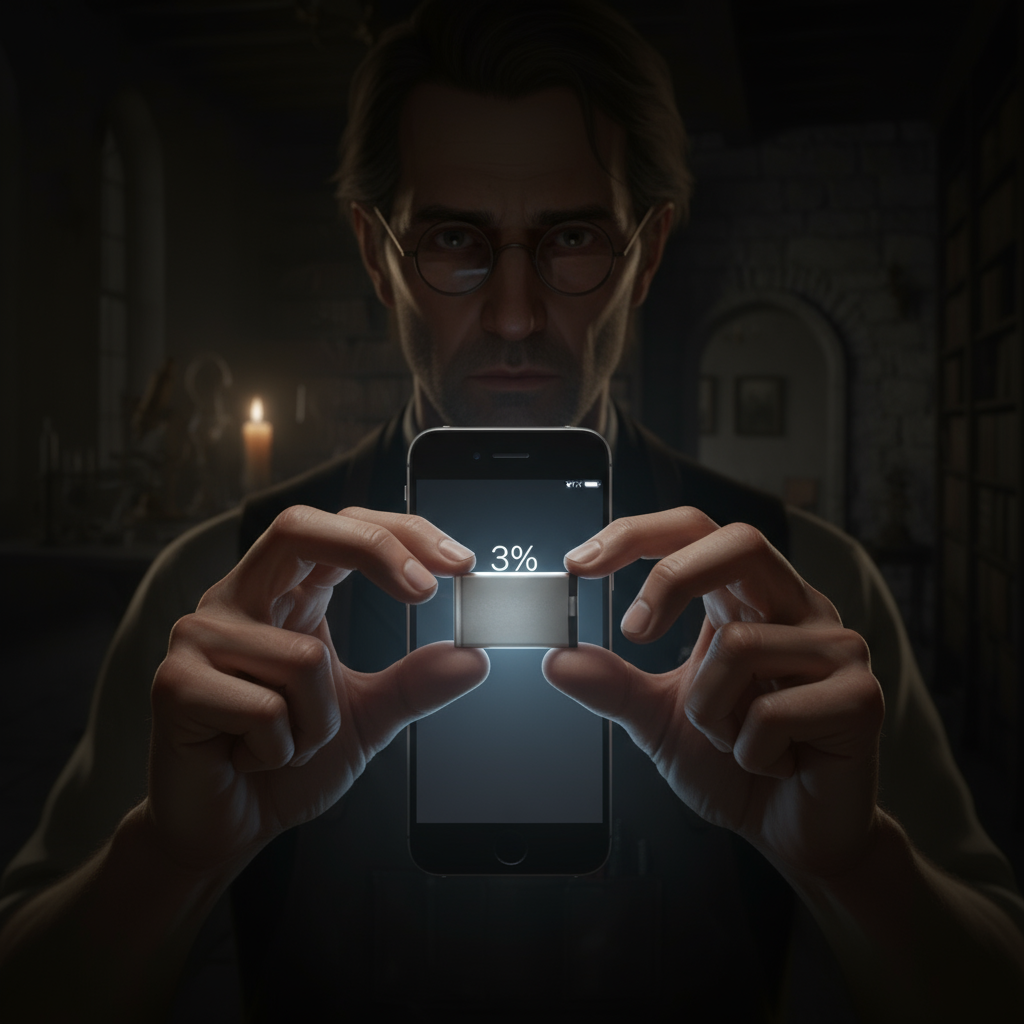
Coda
The morning is clear, cold, the first hard frost of November silvering the courtyard stones. Aldrich works by daylight, no lamp needed.
The final notebook lies closed on his bench. Leather binding. Three hundred pages. Every observation recorded in his steadiest hand, technical precision intact. The principles of semiconductor physics, derived from first observation. The architecture of integrated circuits, mapped and analyzed. The electrochemistry of lithium cells, complete.
Beside it: the battery. Inert now. Dead. A small rectangle of metal and chemistry, holding no charge, offering no light.
He places both in a steel box. Seals it with solder. Engraves the lid with a watchmaker's punch: TO BE OPENED 1970.
One hundred years.
In one hundred years, will humanity have discovered these principles independently? Will his documentation read as prophecy or madness? Will anyone open this box at all?
He does not know.
He carries the box to the courtyard, digs two feet down in the frozen earth, lowers it into the ground. Covers it. Tamps the soil. Places a stone to mark the spot, anonymous among anonymous stones.
Returns to his workshop.
The workbench is empty now. Instruments cleaned and stored. Notebooks shelved. The device dismantled completely, its components buried or scattered. No evidence remains.
His wife's portrait still faces the wall.
He sits at the empty bench, the north light cold and clear, and does not know if he has preserved knowledge or merely given form to its absence.
The light reveals everything. The light explains nothing.
Outside, the city continues. Foundries smoke. Locomotives run. Men work with the metals they can shape, the tools they can build, the tolerances they can achieve.
He has seen the future.
The future is made of materials that do not yet exist, built by processes not yet imagined, obeying principles not yet discovered.
Understanding this has taught him nothing except the limits of understanding.
He sits in the cold light.
The question remains.
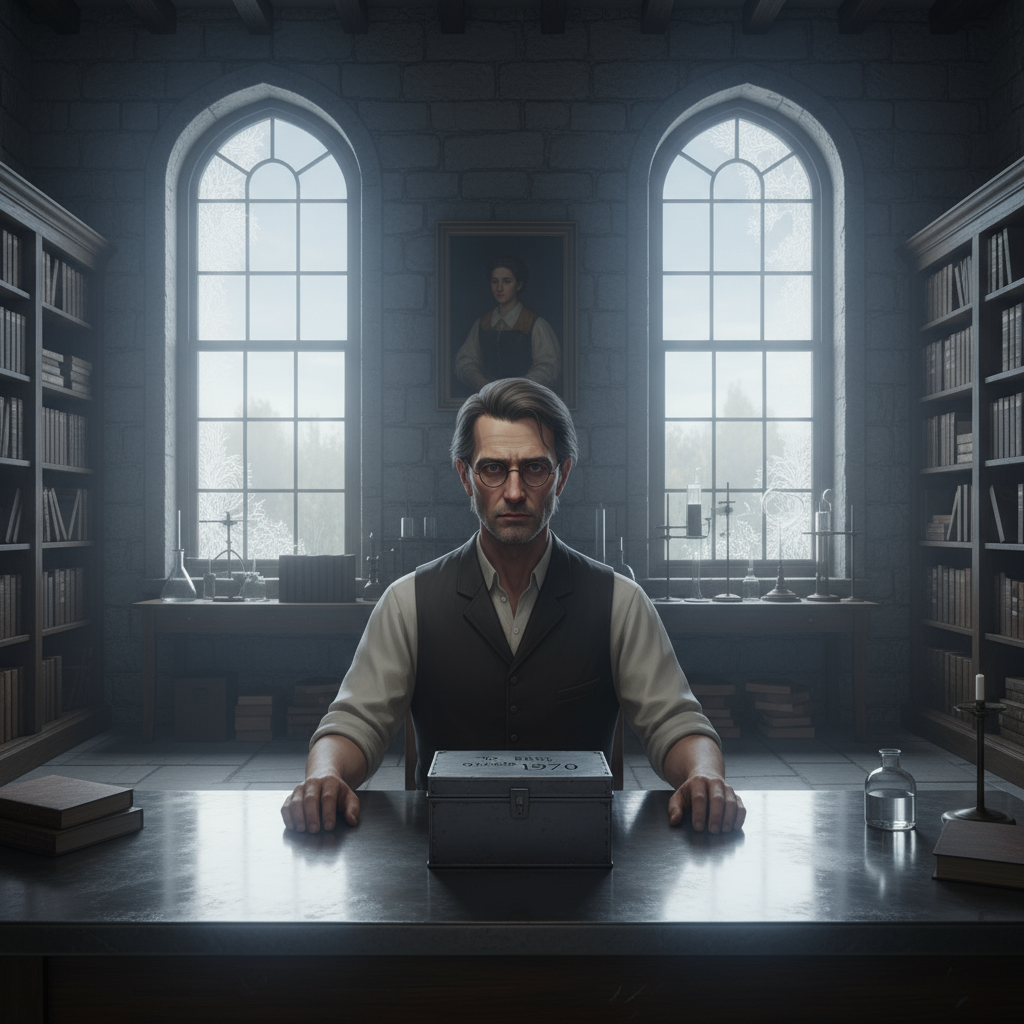
END
Written in Philadelphia, 1870. Or 2025. The date is negotiable.